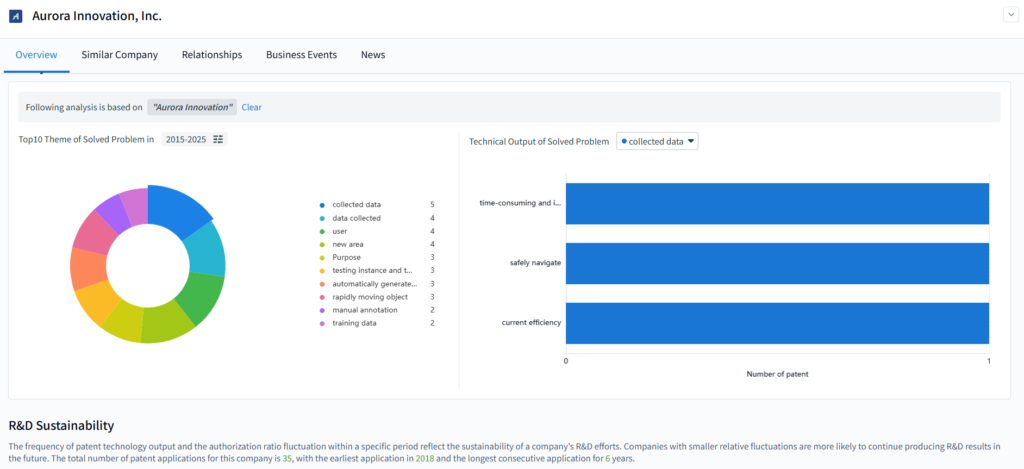
Aurora Innovation, founded in 2017 and headquartered in Pittsburgh, is a leading American autonomous vehicle technology company. Specializing in full-stack self-driving software and platforms, Aurora aims to revolutionize transportation through AI-driven autonomy across freight and passenger mobility.
With its flagship product Aurora Driver, the company has built a reputation for technical rigor and real-world deployment readiness in the autonomous trucking sector.
This article offers a comprehensive breakdown of Aurora’s technology, business strategy, and innovation footprint. Through PatSnap Eureka AI Agent, we explore the company’s R&D direction, patent strategy, and collaboration network using three core modules:
- Technology Collaboration Network
- Enterprise Technology Focus
- Innovation Matrix (Tech–Application Mapping)
Quick Company Snapshot
| Attribute | Detail |
|---|---|
| Founded | 2017 |
| Headquarters | Pittsburgh, Pennsylvania, USA |
| Industry | Autonomous Vehicles, AI, Robotics |
| CEO | Chris Urmson |
| Employees | ~1,600 |
| Key Markets | U.S., Logistics & Freight, Mobility |
| Status | Public (NASDAQ: AUR) |
| Website | https://aurora.tech |
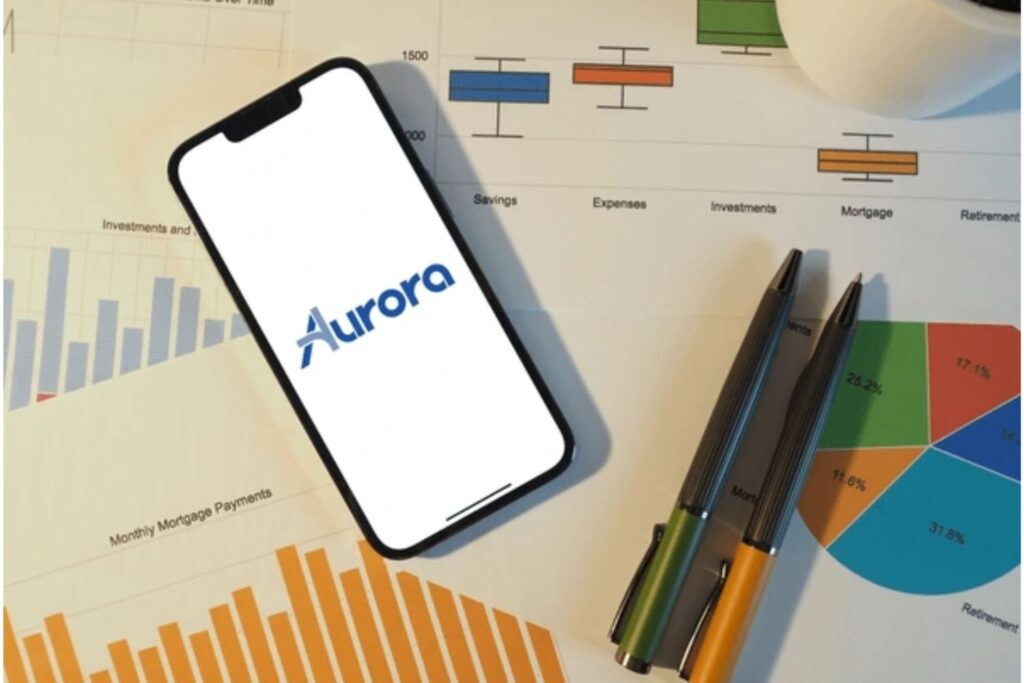
Products & Services of Aurora Innovation
Aurora offers a full-stack autonomous driving platform focused on long-haul trucking and ride-hailing. Its core offerings include:
- Aurora Driver: a hardware-agnostic self-driving system integrating AI perception, path planning, and control modules
- Aurora Horizon: logistics service for autonomous freight hauling
- Aurora Connect: ride-hailing integration for autonomous passenger mobility
Unlike many competitors, Aurora takes a simulation-first, safety-critical approach and emphasizes modularity and OEM partnerships.
Technology Insights via PatSnap Eureka’s Company Search AI Agent
Using Eureka’s AI-driven tools, we mapped Aurora Innovation’s innovation blueprint.
Enterprise Technology Focus
In the dynamic landscape of corporate innovation, understanding a company’s technological priorities is crucial for strategic decision-making. PatSnap Eureka excels in dissecting this complexity by visualizing key technical terms derived from Aurora’s recent 5,000 patents. Through an intuitive word cloud, it aggregates and highlights the most prominent themes, making it easy to discern the focal areas of research and development.
- Visualize key technical terms from recent 5,000 patents
- Show word cloud + key themes
- Explain what the focus tells us about strategic direction
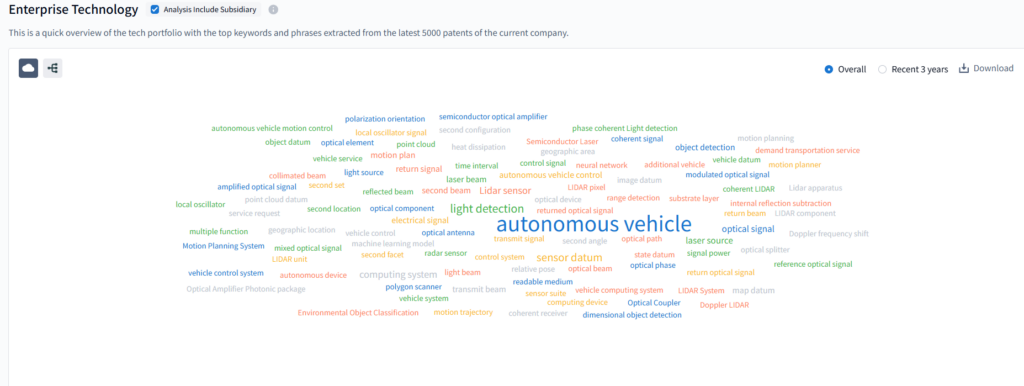
This word cloud showcases Aurora Innovation, Inc.’s enterprise technology portfolio, derived from its latest 5000 patents. Key terms like “autonomous vehicle,” “Lidar,” “light detection,” and “motion control” highlight its focus on self – driving tech R&D. By integrating sensor systems, optical technologies, and vehicle motion planning, Aurora gains an edge in precise environmental perception and smart driving decision – making. These patents back its innovation in autonomous driving, fueling advancements for safer and more efficient self – driving solutions.
Innovation Matrix (Tech–Application Mapping)
In the realm of corporate innovation, the Innovation Matrix within PatSnap Eureka serves as an indispensable tool for mapping the intricate relationship between technologies and their applications. By displaying patent counts across diverse application fields, it provides a quantitative overview of where Aurora’s innovative efforts are concentrated.
- Display patent counts across application fields
- Mention top use cases and potential white space
- Use visual (heatmap or table) if possible
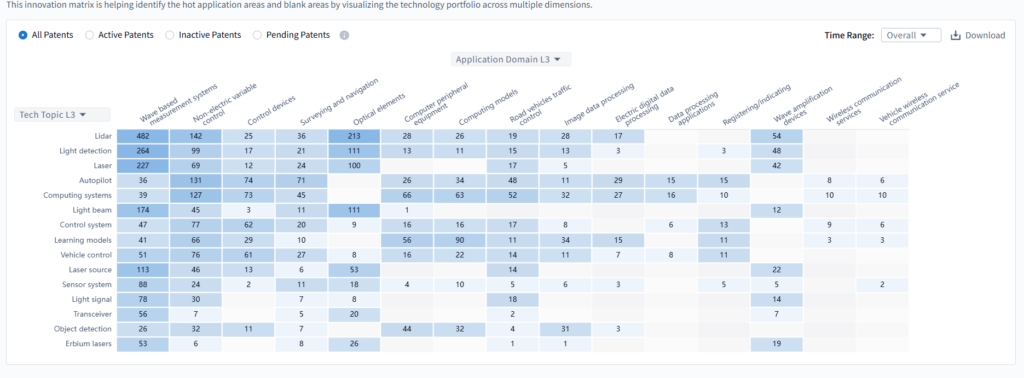
Aurora’s innovation matrix maps its patent portfolio across tech topics (Lidar, Autopilot, etc.) and application domains (wave – based measurement, traffic control, etc.). High – density areas like Lidar + wave – based systems (482 patents) reflect core R&D in sensor – driven autonomy. Sparse regions, such as Autopilot + wave – based systems (36 patents), highlight potential gaps for future investment to strengthen its autonomous – driving tech ecosystem.
Technology Collaboration Network
In the fast-paced world of innovation, collaboration is key. PatSnap Eureka’s Technology Collaboration Network quickly identifies Aurora’s top academic and corporate R&D partners. Using green links for joint research and purple links for joint patents, it visually maps different types of collaborations. By analyzing these links, stakeholders can gauge the strength of each partnership and understand which collaborations are driving technological progress, helping businesses make smarter decisions about their innovation strategies.
- Identify top academic and corporate R&D partners
- Show link types: joint patents (purple), joint research (green)
- Interpret strength of innovation partnerships
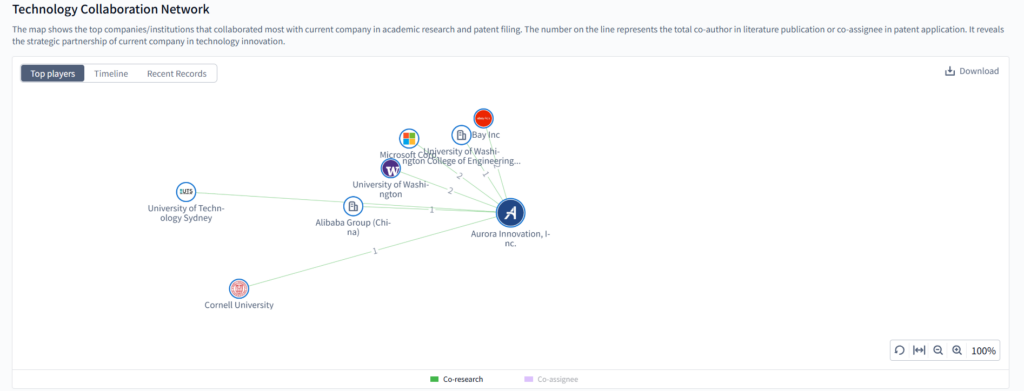
Aurora Innovation, Inc. ’s key collaborators in this network include Cornell University (green line, co – research in tech fields like autonomous systems) and eBay Inc (green line, joint R&D footprints). The map uses green lines to mark “Co – research” collaborations—e.g., partnerships with the University of Washington, University of Technology Sydney focus on blending academic insights (like AI – based localization for autonomy) into R&D. Corporate ally Microsoft Corp. (green line, co – innovation ties) and ecosystem players like Alibaba Group also link via research collaborations. This network shows Aurora’s strategy: marry academic deep dives (from top unis) with industry partnerships (tech giants) to push autonomous vehicle tech commercialization, using joint research as the bridge.
Recent Developments & Outlook
- In 2023, Aurora launched autonomous freight pilots in Texas with PACCAR trucks
- Completed Series D funding prior to going public via SPAC in 2021
- Acquired Uber’s Advanced Technologies Group (ATG), enhancing technical depth and team scale
- Partnering with Continental AG for scalable hardware production by 2027
- Looking ahead, Aurora plans commercial launch of Aurora Horizon by end of 2024…
Want a deeper dive into Aurora’s IP, R&D priorities, and competitor benchmarks? Try PatSnap Eureka’s Company Search AI Agent.

